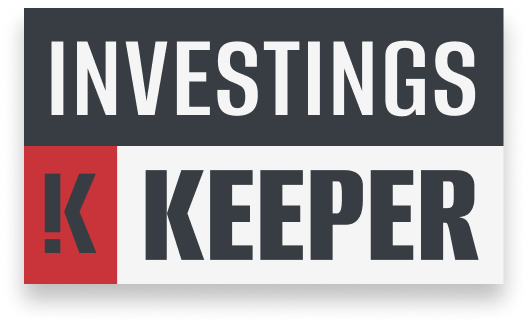
It’s never too early or too late to start investing, and you don’t need a bunch of money to begin building wealth. However, if you have a decent nest egg going, you may be looking for ways to grow it even further. Keep reading to find out ways you can invest $100,000 or more, including options such as retirement accounts, the stock market, buying precious metals or real estate, and cryptocurrencies.
Before You Start Investing, Consider These Key Factors
Before you deposit money into an investment account or put an offer in on a real estate investment property, take some time to consider your financial situation and how to manage your money. Make sure you have answers or plans for the following questions before you begin investing.
Will investing take money away from other critical needs? Building wealth for the future is certainly important, but it doesn’t trump today’s needs and obligations. Make sure you can pay all your bills and cover basic necessities, such as shelter and food, before you place money into any investment. You may also want to have a cash emergency fund in a checking or savings account that you can easily access on top of your wealth-building investments, as you can’t always get money out of investments immediately if you need it.
How will investing impact your taxes? In some cases, such as with 401ks, investing can reduce your income tax burden in the short term. In other cases, earnings on investments may increase how much tax you owe each year. Either way, eventually the IRS is likely to come calling for its share of what you make on investments, so be sure to have a plan for dealing with those expenses.
Should you work with a financial advisor or money manager? Some people feel comfortable handling their own investments, while others prefer the guidance of a professional. A financial advisor can take care of the tedious details related to investing, so you can spend time living your life. They can also provide advice to help you understand what options might be right for your goals and financial situation.
What are your financial goals (and the timeline for those goals?) Your financial goals help dictate which investments might be right for you. For example, if you’re younger and you want to build wealth over time, you might split investments between high-risk, high-reward options and lower-risk, lower-reward accounts that provide a safety net. If you’re older and just want to add a bit to your retirement savings, you may take more conservative approaches because you don’t have as many years to build back any money you might lose in a high-risk investment.
Can you afford to lose any of the money you’re investing? Understand what you can afford to lose. While some investments are safer than others, options such as stocks or even real estate don’t mean a guaranteed return and there is always the risk of losing your principal investment. Consider working with financial advisors or other professionals to create savings you can rely on with some of your money while you invest some for potential gain.
Do you have any missions or values to support? Many people want to engage in socially responsible investing. This can mean choosing investments that align with your values, so you’re supporting the companies and organizations doing the type of work you want to see done.
9 Ways to Invest $100,000
If you’ve read anything at all about money management or investing, you know about not putting all the eggs into a single basket. It’s a concept known as diversification — you typically want a diverse investment portfolio so that hopefully some of your assets are performing well, even if others aren’t. To help you find a few baskets for your eggs, here’s a look at nine ways you can invest $100,000.
1. Retirement Accounts Like 401ks and IRAs
Qualified retirement accounts let you sock away a certain amount of money every year pretax, making them an attractive way to save for the future. If you have an employer-sponsored 401k, your company may match what you put into it up to a certain amount. That can help you build more wealth for the future without the money coming out of your pocket.
You can’t drop $100,000 in a single year in one of these accounts, though, making 401ks and IRAs only one of the baskets you may want to consider. In 2022, deferral limits for 401k plans were set at $20,500 total (or $27,000 if you’re aged 50 or older and making catch-up contributions). IRA contribution limits for 2022 were set at $6,000 total (or $7,000 for those making catch-up contributions).
2. Buy Stocks
Buying individual stocks can be a high-reward investment, especially if you pick a winner and hold on to it long-term. For example, someone who invested $1,000 in Amazon stock in 2008 would have had stock worth $20,000 in 2018. That’s a gain of 2,000%.
Putting some of your money into stable stock and sitting on it for decades can be one long-term growth strategy, but it’s important to remember that investing in stocks always comes with risk. When you buy stock in a single company, you’re essentially putting that bet on a specific company. If anything goes badly for the company, it’s likely to go badly for your investment. Do research, discuss options with professionals, and consider hedging your bets with a diverse portfolio when you plan to buy stock.
3. Invest in Mutual Funds or Exchange-Traded Funds (ETFs)
Mutual funds and ETFs let you invest in stocks and bonds without having to pick your own potential investments. These types of funds are made up of a variety of investments, potentially including stocks and bonds. The investments are picked to balance each other out and help support the overall positive performance of the fund.
While there’s no such thing as a sure bet, even with mutual funds, these types of investments tend to come with less risk than buying a single company’s stock does. That’s because if one stock within the mutual fund basket does poorly in a season, there are other stocks to potentially balance it out. You also don’t have to pick the stocks in your fund; typically, you work with a fund manager who handles the mutual fund for you. While this does mean you pay management fees, it can provide some peace of mind and let you somewhat “set-and-forget” your investments.
4. Buy Gold or Other Precious Metals
While gold and other precious metals may be volatile in the short-run they are typically considered an investment worth considering because they historically maintain their value well over time. Gold also tends to perform in economic markets even when the dollar and other investments aren’t, so some people use precious metals as a balancer in investment portfolios.
You can invest in gold and other metals, including silver and palladium, in a variety of ways. You can buy coins or bullion outright, invest in a precious metals IRA, or buy precious metals ETFs. It’s important to remember, however, that gold isn’t a magic investment with crazy returns, especially as you may see some marketing hype that positions gold as “the main answer” to investment concerns. In reality, gold’s historic performance (from 1971 through 2019) is equivalent to the average performance of commodities and U.S. stocks.
5. Invest in Real Estate
Real estate investments can work similarly to gold and other alternative options in your portfolio, balancing out other investments. If you’re wondering how to invest $100k in real estate, you have some options.
The first, and potentially most obvious, option most people consider is buying actual property. Some ideas include:
Buying and flipping a home. This involves purchasing a home for a good price, putting some work into it to bring up the value, and selling it quickly to turn a profit. Successful flippers tend to understand the residential real estate market in their area, have contacts with contractors and other professionals, and are able to do some work to upgrade a home themselves.
Buying a property to rent. You might also buy a home, duplex, or even a commercial real estate property and rent it to others. Typically, this is a long-term investment strategy, as it can take years to recoup your initial investment via rents. However, during that time, you are receiving regular income via the rent.
Investing in real estate funds. Real estate investment trusts, or REITs, for example, refer to organizations that own a lot of commercial properties that generate income. You can invest in these trusts to get dividends from that income. Alternatively, you can invest in ETFs that pull multiple REITs or other real-estate investments into one fund, creating more diversity.
6. Consider Cryptocurrencies
Cryptocurrencies have moved from the fringe to the mainstream as far as investing goes in recent years. Many people are aware of Bitcoin, but you can choose from a variety of other cryptos as a potential way to diversify your investments.
You may hear stories of the meteoric rise of Bitcoin and how people made a ton of money on it, but that doesn’t mean you should take everything out of your portfolio and dump it into this option. Yes, from October 2013 to March 2021, the Bitcoin price index in the United States rose from around $196 to more than $58,000 — almost a 30,000% gain. But as of September 2022, the price index had dropped to just under $20,000.
Cryptos, like any other investment, rise and fall. They can also be extremely volatile and unpredictable so it is worth heavy consideration if Crypto is the right fit for your investment strategy before investing.
7. Make Alternative Investment Purchases
Some people like to purchase collectibles, such as art, jewelry, or coins, as long-term investments. The thought is that these collectibles gain value over time, becoming worth more than you bought them for. At some point in the future, you may be able to sell them for a profit.
One of the advantages of this type of investing is that you get a tangible item for your money, and you can enjoy the benefits of that item, even if it never goes up in value. A piece of fine art can hang in your living room and be enjoyed as a conversation piece; a piece of diamond jewelry can be worn.
There are also potential downsides to this type of investment:
You run the risk of purchasing a fake or something that’s not actually worth what you think it is.
Physical items can be destroyed or damaged, mitigating their value.
There’s no guarantee items will appreciate, and they may depreciate.
If you still want to invest in tangible items, do your research, only purchase from reputable sources, and look into buying insurance to protect your investment.
8. Put Money in High-Yield Savings
While you’re hedging your bets and diversifying your portfolio, it may be a good idea to consider some low-risk investment options. These typically don’t have high returns, so you won’t be turning your $100,000 investment into millions right away (or possibly ever). However, many low-risk investments protect your initial deposit, so you at least always have the amount you started with.
A high-yield savings account is not technically an investment, but it is a way to earn returns on your cash. High-yield savings accounts tend to pay more interest than regular savings accounts. These types of accounts may be a good option for your emergency fund and other short-term cash needs.
9. Pay Down Your Debt to Save on Interest
Investing in your financial future may not always look like building wealth. In some cases, you might want to take steps to avoid expenses first. If you have $30,000 in credit card debt and you’re paying an average of 20% interest on that debt, investing with a return of 10% interest somewhere else may actually mean you’re losing money overall. Carefully consider your financial situation and whether you should use some of your available cash to pay down debt before you start seriously building wealth.
Remember, you don’t have to choose one of these nine ways. Ideal investment strategies typically include multiple options, so you might pay down some debt while using part of your money to start making investments.
How Can I Invest $100k to Make Passive Income?
Passive income refers to money that comes in without you having to do anything active for it. Flipping a house for a profit is not passive income, but dividends from stock shares are. Here are just a few ways you can invest $100k to make some passive income:
Invest in stocks or bonds. You don’t have to do anything as they potentially gain value, and you can sell them for a profit. This can be even more passive when you have a financial advisor who buys and sells on your behalf. Remember though that gains aren’t realized until positions are closed.
Real estate. You can buy properties and make passive income from rentals especially if you pay a property management company to handle the day-to-day work for you.
High-yield savings accounts and CDs. Low-risk investments may not earn a huge return, but when you didn’t do any work to get there, the passive income can be nice.
How Long Does It Take to Turn $100k Into a Million?
Many people cite a million dollars as their retirement goal (although you should always consider your unique financial needs when setting goals). It takes around 35 years to turn $100,000 into a million if your investments average around 8% return overall. At a 10% average return, it would take just under 30 years.
You can potentially lower the time it takes by continuing to invest money. For example, if you invest $100,000 initially and another $1,000 per month and get an average 10% return over time, you hit a million in less than 20 years. It is important to note though that returns are never guaranteed.
Our Take
A personal investing strategy is important whether you’re starting with $1,000 or $100,000. Consider talking to a fiduciary financial advisor for more detailed guidance on your wealth-building strategy.



